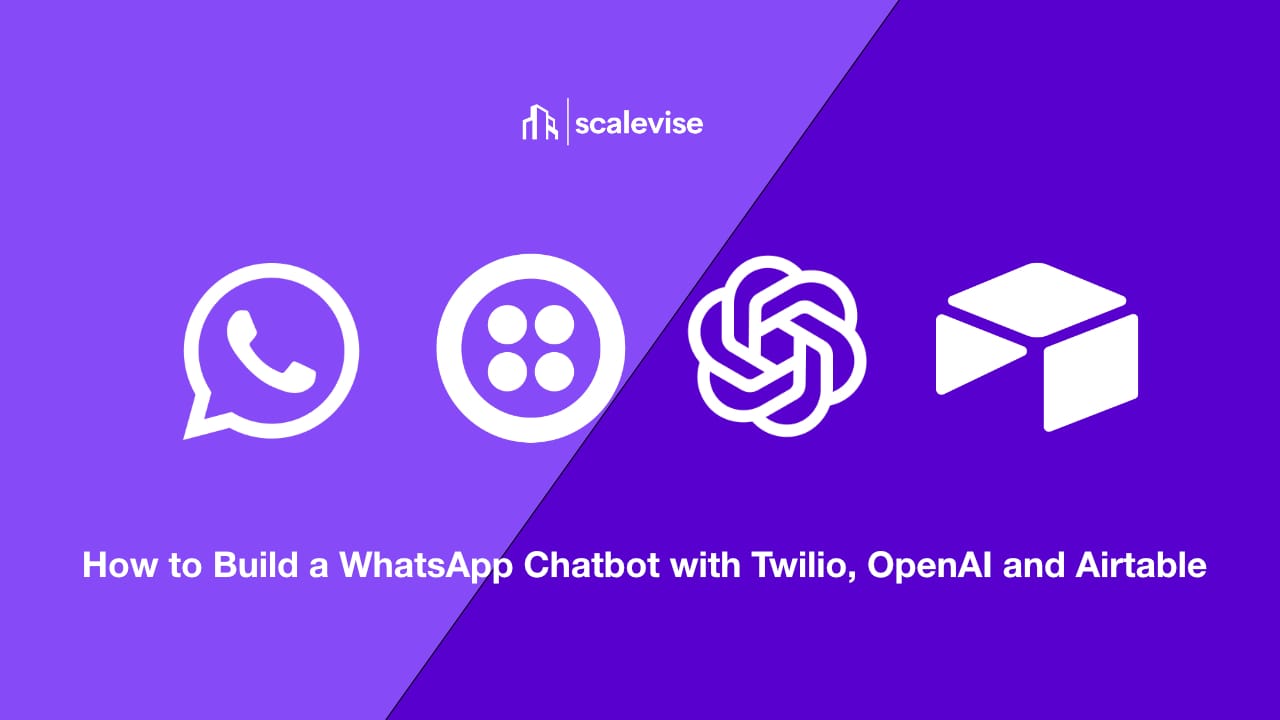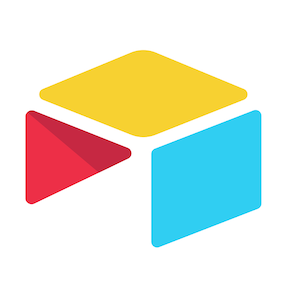How to Build a WhatsApp Chatbot with Twilio, OpenAI and Airtable Analytics: Complete Guide

Creating a fully functioning WhatsApp chatbot that integrates with OpenAI and logs all conversation data into Airtable while also embedding it seamlessly into your website requires a coordinated setup of messaging APIs, frontend/backend logic, and proper data management.

Airtable
Flexible database plus automations, interfaces, and a robust API. Ideal for teams that need a central source of truth with fast iteration and clean handoffs to operations.
- ✓ Relational tables, views, and permissions
- ✓ Built-in automations and interfaces
- ✓ Scales with API and integrations
This guide gives you an A-to-Z walkthrough:
Overview: What You’ll Build
- A WhatsApp chatbot using Twilio or 360dialog
- A Node.js backend with a webhook that processes WhatsApp messages
- A connection to the OpenAI API to generate dynamic replies
- Logging all interactions in Airtable for reporting & insights
- A front-facing website widget that triggers a WhatsApp chat
1. Set Up WhatsApp API Access
Option A: Use Twilio Sandbox (For Testing)
- Sign up at twilio.com
- Activate the WhatsApp sandbox and link your phone
- Note the sandbox number and the webhook URL placeholder
Option B: Use 360dialog (For Production)
- Sign up at 360dialog.com
- Connect your WhatsApp Business Account (WABA)
- Generate an API key and webhook URL for your server
2. Set Up Your Node.js Server (Webhook Backend)
Create a small Express.js app that listens to WhatsApp messages and responds using OpenAI.
- Install dependencies: express, body-parser, axios, dotenv
- Add routes: /webhook to receive incoming messages
- Authenticate to OpenAI API
- Log messages to Airtable API
// index.js
const express = require('express');
const bodyParser = require('body-parser');
const app = express();
const webhook = require('./api/whatsapp-webhook');
app.use(bodyParser.urlencoded({ extended: false }));
app.use(bodyParser.json());
app.use('/api/whatsapp-webhook', webhook);
app.listen(3000, () => {
console.log('Server running on port 3000');
});// /api/whatsapp-webhook.js
const express = require('express');
const axios = require('axios');
const router = express.Router();
require('dotenv').config();
router.post('/', async (req, res) => {
const message = req.body.Body;
const userNumber = req.body.From;
// Get reply from OpenAI
const openaiRes = await axios.post(
'https://api.openai.com/v1/chat/completions',
{
model: 'gpt-4',
messages: [{ role: 'user', content: message }]
},
{
headers: {
Authorization: `Bearer ${process.env.OPENAI_API_KEY}`
}
}
);
const reply = openaiRes.data.choices[0].message.content;
// Store in Airtable
await axios.post(
'https://api.airtable.com/v0/YOUR_BASE_ID/Conversations',
{
fields: {
Phone: userNumber,
Message: message,
Reply: reply,
Timestamp: new Date().toISOString()
}
},
{
headers: {
Authorization: `Bearer ${process.env.AIRTABLE_API_KEY}`,
'Content-Type': 'application/json'
}
}
);
// Respond to Twilio
res.set('Content-Type', 'text/xml');
res.send(
`<?xml version="1.0" encoding="UTF-8"?><Response><Message>${reply}</Message></Response>`
);
});
module.exports = router;Deploy this to a service like Render, Railway, or Vercel.
3. Connect WhatsApp Provider to Your Backend
- In Twilio: set your webhook URL under WhatsApp sandbox configuration
- In 360dialog: set the webhook under WhatsApp API settings
Now all messages sent to your WhatsApp number will POST to your webhook.
4. Connect to OpenAI
In your webhook handler, send user messages to OpenAI using chat/completions. Handle:
- Input validation
- Contextual prompts (optional)
- Streaming or standard response handling
You can personalize replies per user using metadata from Airtable or session tracking.
5. Store Data in Airtable
Create a base with a table Conversations. Add fields:
- Phone
- Message
- Reply
- Timestamp
- Topic (optional)
Use Airtable’s REST API to POST conversation data after each exchange.
await axios.post(
'https://api.airtable.com/v0/YOUR_BASE_ID/Conversations',
{
fields: {
Phone: userNumber,
Message: message,
Reply: reply,
Timestamp: new Date().toISOString()
}
},
{
headers: {
Authorization: `Bearer ${process.env.AIRTABLE_API_KEY}`,
'Content-Type': 'application/json'
}
}
);
Airtable
Flexible database plus automations, interfaces, and a robust API. Ideal for teams that need a central source of truth with fast iteration and clean handoffs to operations.
- ✓ Relational tables, views, and permissions
- ✓ Built-in automations and interfaces
- ✓ Scales with API and integrations
6. Add WhatsApp Chat Widget to Your Website
Use a WhatsApp floating widget or direct wa.me links:
Option A: HTML Widget
Use a service like GetButton.io or write your own widget that opens:
https://wa.me/1234567890?text=Hi<a href="https://wa.me/31612345678?text=Hi%20there!" target="_blank" rel="noopener">
<button style="background-color:#25D366;color:white;padding:10px 15px;border:none;border-radius:5px;">
Chat with us on WhatsApp
</button>
</a>Style it as a floating button or embed it inline.
Option B: Custom Vue or React Component
Build a component that opens WhatsApp Web or App when clicked. Track events for analytics (e.g., Google Tag Manager).
7. Build Airtable Dashboard
Use Airtable Interfaces to:
- Filter conversations per user
- See messages per day/week
- Detect most common questions
- Monitor OpenAI response quality
Optionally export to Google Sheets or connect to Looker Studio.
8. Add Intelligence: Context, Memory, and Triggers
Use Redis or PostgreSQL to track message history per session. Enhance AI logic with:
- Intent recognition (OpenAI or custom model)
- Trigger-specific workflows (e.g., booking, pricing)
- Scheduled follow-ups via WhatsApp Business templates
9. Deployment and Scaling
- Deploy to a cloud platform (Vercel, AWS Lambda, or Docker container)
- Set up error logging (e.g., Logtail or Sentry)
- Monitor API usage from OpenAI and Twilio
10. Compliance & Best Practices
- GDPR compliance: inform users, ask consent, respect data retention
- Respect WhatsApp rules (no unsolicited outreach)
- Use verified templates for outbound messages
Final Thoughts
By combining WhatsApp, OpenAI, and Airtable, you can build a powerful, scalable, and intelligent chatbot system fully embedded into your website and backed by data.
This isn’t just a chatbot. It’s a customer insight engine.
👉 Need help deploying this for your business? Contact Scalevise to get started fast.
